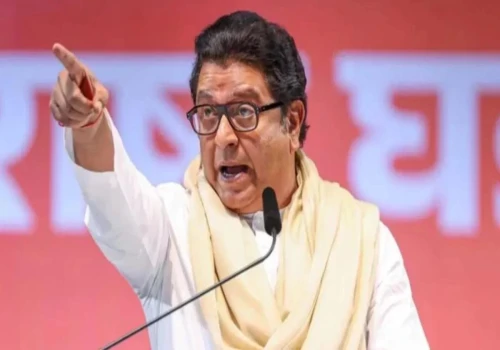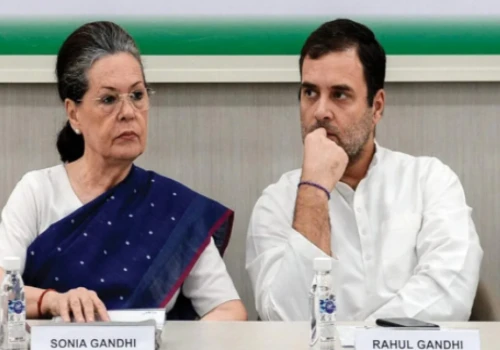
Mumbai: In a significant political development, the central government has added 15 castes to the Other Backward Classes (OBC) category in Maharashtra while excluding the Marathas. This decision follows the Haryana elections, believed to have influenced the government's approach to caste-based reservations across different states.
For the past 18 months, the Maratha movement, led by activist Manoj Jarange Patil, has gained traction in Maharashtra. Upon hearing the government's decision, Patil expressed disappointment and questioned why the Marathas were not included in the OBC list. This comes amid a highly charged atmosphere, where the Maratha agitation is at its peak.
Had the Maratha movement not been so forceful, the inclusion of 15 more castes in the OBC category might have triggered discontent among existing OBC communities. However, by excluding the Marathas, the central government seems to have eased tensions within the OBCs, who now appear to be satisfied with the decision.
*Two Birds with One Stone*
The central government appears to have accomplished two objectives in one move. The 15 newly included castes are pleased with their inclusion in the OBC category. Simultaneously, the existing OBCs, who were concerned about losing their reservation benefits, are content with the exclusion of Marathas, preventing potential internal friction.
*Historical Parallels to Haryana*
This development mirrors the situation in Haryana, where the Congress believed that by fueling the Jat agitation through farmer and wrestler movements, they could consolidate Jat votes. Instead, this strategy backfired, with OBC and Dalit voters shifting to the BJP. In Maharashtra, a similar dynamic may be unfolding.
The Maha Vikas Aghadi (MVA)—comprising the NCP Sharad Pawar Group, Shiv Sena UBT Group, and Congress—has been pushing the Maratha movement, hoping to rally Maratha voters. However, this strategy risks alienating OBCs and other non-Maratha communities. Behind the scenes, MVA leaders like Sharad Pawar have backed Manoj Jarange Patil’s agitation, while on the other side, Chhagan Bhujbal of the NCP Ajit Pawar faction, which is part of the NDA (Mahayuti), is working to polarize the OBCs against the Maratha movement.
While the MVA has focused on addressing the Maratha cause, the coalition may have underestimated the growing discontent within the OBC community. The government, particularly during Devendra Fadnavis’s tenure, took significant measures to address OBC concerns, including the creation of a dedicated OBC Ministry.
*BJP’s Strategic Position*
For the BJP, this situation offers a strategic advantage. Many Marathas who align with RSS ideology continue to support the BJP, and they are unlikely to distance themselves from the party. With the BJP-Shiv Sena-NCP alliance, there is an opportunity to consolidate both Maratha and OBC votes under a larger Hindutva platform, which could lead to significant electoral gains in Maharashtra.
*Tensions Within MVA*
The recent results from Haryana have already stirred tension within the Maha Vikas Aghadi. Sanjay Raut of Shiv Sena UBT recently taunted Congress, suggesting that the party should contest elections on its own, signaling growing unease within the alliance.
*Caste-Based Polarization*
Similar to how religious polarization has often benefited the BJP, a plan seems to be in motion to fracture the Hindu vote. The Congress and other opposition parties, by focusing on the Maratha movement and caste conflicts, may have overlooked the possibility of counter-polarization. Just as counter-polarization occurs between religions, it can also happen between a dominant caste and multiple minority castes. This has already played out in Haryana, with OBCs and Dalits gravitating towards the BJP, a trend that may now be repeating itself in Maharashtra.
*A Late Realization for MVA*
Although the Maha Vikas Aghadi may have begun recognizing their missteps, it could be too late. Manoj Jarange Patil, the leader they helped bring to prominence, is now threatening their very support base by alienating OBCs and other non-Maratha castes. Additionally, by consistently targeting Fadnavis, there is a growing possibility that Brahmin voters, another key bloc, will rally behind the BJP.
As caste-based tensions escalate, the shifting political alliances in Maharashtra are poised to shape the outcome of upcoming elections. With OBCs, Marathas, and other castes repositioning themselves, the exclusion of Marathas from the OBC category may become a turning point in the state’s political landscape.








_500_x_350.webp)



